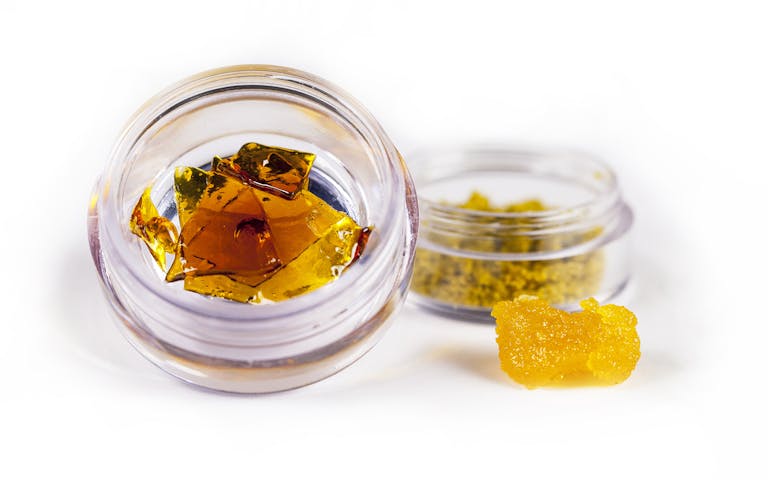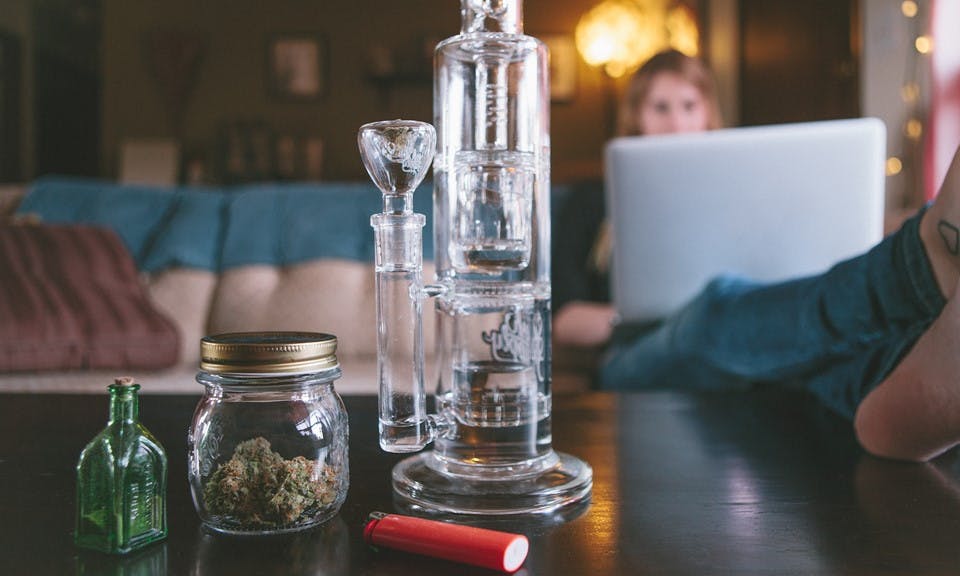On Jan. 1, 2017, Colorado will raise its state-regulated limit on the residual levels of volatile solvents allowed in cannabis concentrates. It’s a little-noticed rule change that involves dramatically increased levels of allowable solvents. Among the changes:
- The legal threshold for butane, the solvent that puts the B in BHO, will increase more than sixfold, from 800 parts per million to 5,000 ppm.
- Allowed residuals for heptanes, another class of solvents, will go up by a factor of 10.
- Xylenes, industrial solvents that technically aren’t allowed to be used for cannabis extraction at all, will be permitted at concentrations of up to 2,170 ppm—significantly higher than the previous limit of less than 1 ppm.
- The state residual limit on benzene, perhaps the most hazardous chemical of the group, will double from less than 1 ppm to less than 2 ppm.

A redlined version of Colorado state testing regulations highlights the changes to residual solvent limits in the state, set to take effect Jan. 1. Click to expand image. (Colorado Department of Revenue)
“Consumers are going to feel like they might taste it.”
On the surface, these are staggering increases in chemicals that, at some levels, have been associated with nausea, irregular heartbeat, increased risk of cancer, and even death. Regulators, testing laboratory operators, and industry members in other states have expressed surprise at the changes, which will apply to both adult-use and medical markets. Mike Van Dyke, chief of the Environmental Epidemiology, Occupational Health, and Toxicology Branch at the Colorado Department of Public Health and Environment (CDPHE), which recommended the new limit, acknowledged that concentrates capable of clearing the regulatory hurdles could be noticeably different from what’s currently allowed.
“Consumers are going to feel like they might taste it,” he said of new allowed butane levels. “They might smell it.”
“I’m surprised nobody else has even actually been interested in this,” he told me in an interview last week.
There are a few things CDPHE’s Van Dyke wants to make clear about the new rules. Here is one: “This change was not a result of any industry pressure.”
The increase didn’t come at the behest of lobbyists, he told Leafly. “In fact, in the workgroups, if we heard anything from industry, I think we heard the other side, that these were too high,” he said, “which is an uncommon place to be.”
What Is Going On?
The justification for the change, according to Van Dyke, is that the new limits truly follow the best currently available medical and scientific guidance. “This was a re-evaluation based on trying to make things health-based,” he explained. “These numbers came from the international harmonized guidelines for residual solvents in pharmaceuticals.”
Van Dyke is referring to a published scientific article he cited in a July letter to Jim Burack, director of the Colorado Department of Revenue’s enforcement division, which is in charge of enforcing the new standards. Van Dyke provided the letter and spoke at length to Leafly about the coming change.
“Will these numbers stand the test of time? I don’t know,” he said. “We’re open to new data that comes out, but our goal is to make sure that we maintain, the best we can, the best evidence-based regulations for health.”
The agency is trying to do precisely what it’s been asked, Van Dyke said. Legislation passed this year, House Bill 16-1261, put the CDPHE in charge of recommending testing standards “based on medical reports and published scientific literature.”
When the Colorado Department of Revenue set the previous limits, in the wake of Amendment 64’s passage, it was a “fast and furious” process, Van Dyke said. “There were times you came up with numbers because that’s what you came up with at the time.” Despite the eye-popping increases, he said the new limits adhere more strictly to the latest available evidence in scientific research.
Comparison Shopping
Other jurisdictions have set residual solvent limits lower than Colorado. Berkeley, Calif., limits total combined residual solvents at 400 ppm. Oregon, on the other hand, set standards similar to Colorado, but with more solvents identified. In a report explaining its own rulemaking process, the Oregon Health Authority cited the same international pharmaceutical standards as Van Dyke’s letter did. Washington, which was initially silent on residual solvents levels, has considered limits as low as 500 ppm butane and 0.1 ppm benzene, but regulators are currently proposing the state adopt higher limits that match those now embraced by Oregon and Colorado. After a public comment period, the new Washington limits are set to take effect in late February.
“Frankly, we’re not saying that extracted marijuana products should have 5,000 ppm of butane in them,” Van Dyke, in Colorado, said. “What we’re saying is 5,000 is a health-based limit.”
But didn’t he just acknowledge the possibility of literally smelling butane in BHO approved by the state for medical patients?
“I think there may be a lot of market drivers that push those numbers lower,” Van Dyke acknowledged, and smell could certainly be one of them. But, he repeated, “it’s not from a health perspective that those numbers should be lower.”
But are residual solvents merely a matter of product taste and quality, or is scientific research still too limited to inspire consumer confidence? It may be a little bit of both.

A Knowledge Problem
A lot of eyes widened when I talked to people who weren’t aware of Colorado’s new standards. Some consumers believe that industrial solvents are inherently hazardous to their health and should be avoided at virtually any level. Many concentrate consumers now opt for solventless extracts, such as rosin or bubble hash. Others don’t worry as much, pointing out (accurately, according to most scientists I talked to) that someone who smells a whiff of butane from a Bic lighter has already inhaled way more than they’ll get in a day of dabbing.
“It’s not the butane,” said Nick Mosely, co-owner and chief science officer at Confidence Analytics, a cannabis testing laboratory in Washington state. “The butane is really not a huge health risk,” he said, adding that it “takes quite a bit”—way more than you’d get from dabbing or a vape pen—to cause serious harm such as liver damage.
A 1981 study cited by the US Department of Health and Human Services found that exposure to 10,000 ppm for 10 minutes may lead to drowsiness but doesn’t appear to cause systemic effects in humans. The average dab consists of about 10 milligrams to 20 mg of concentrate, Mosely at Confidence Analytics said. In the eyes of Colorado regulators, he added, “these Class 3 solvents are not cause for concern at 5,000 ppm when the dose of the substance is so low.”
“Can’t you err on the side of caution, though?”
Mosely did call the levels of xylenes and benzene in Colorado “concerning.”
“The issue” with xylenes and benzene, he explained, is that “the contaminants are unintentionally there.” In other words, those chemicals aren’t part of the extraction process. Those chemicals are sometimes used to clean equipment and may inadvertently become part of the final product. They’re also sometimes found in low-quality solvents—in other words, they’re contaminants in the contaminant. Mosely wasn’t trying to criticize Colorado’s new limits from a health perspective, though he didn’t sound especially jazzed about the idea of finding those residual levels in a concentrate, either. He just meant that a higher—but soon-to-be legal—level of residuals could indicate careless extraction methods or low-quality products.
There’s no question that these solvents, at certain levels, are dangerous. Many, at high concentrations or over long periods of exposure, have been linked to all sorts of negative health conditions, ranging from irregular heartbeat and nausea to cancer and bone marrow failure. Most are tightly regulated in other contexts. Consider benzene. The US EPA limits the chemical concentration in drinking water, for example, to 0.005 ppm (that’s 5 parts per billion), while the Occupational Safety and Health Administration limits workplace exposure to 0.005 ppm . Colorado’s limit in concentrates, by contrast, is 2 ppm—twice the previous level, but the most modest increase of the bunch.
But there’s a familiar problem: There’s been essentially zero research into these solvents in the context of cannabis. As a BuzzFeed headline put it last year, “Wax Is Weed’s Next Big Thing And No One Knows If It’s Safe.”
The claim might be sensational, but it contains an important grain of truth. When regulators and industry try to keep residual solvent levels low, it’s not because they know exactly about how those chemicals behave when you vaporize them. Nobody’s really studied that. Most Americans in 2016 still think dabbing is a style of dance.
Effect of xylene on the nervous system
| Concentration of xylenes | Symptoms |
|---|---|
| 100–200 ppm | Nausea, headache |
| 200–500 ppm | Feeling "high," dizziness, weakness, irritability, vomiting, slowed reaction time |
| 800–10,000 ppm | Giddiness, confusion, clumsiness, slurred speech, loss of balance, ringing in the ears |
| > 10,000 ppm | Sleepiness, loss of consciousness, death |
Agencies that do try to pin residual solvent levels to published scientific data are extrapolating from all different kinds of information. Sometimes it comes from research into solvent exposure among industrial workers. In Colorado and Oregon, health agencies looked to how pharmaceutical production guidelines dealt with residual levels.
Jeffrey Raber is one of the most respected voices in the cannabis testing industry. He runs the Pasadena-based testing lab The Werc Shop and has worked to help educate regulatory bodies in eight states on testing issues. He feels that relying on pharmaceutical guidelines misses an important point. While some solvents might be necessary to make life-saving drugs in a pharmaceutical context, not all solvents are crucial to cannabis extraction.
“In cannabis, you know that you can utilize things that are much, much more physiologically benign,” Raber said. “You’re not forced to use benzene.”
This puts the cannabis industry in a somewhat unusual position. Existing best practices for cannabis extraction far outstrip Colorado’s new regulatory limits. If anything, the new regulations might be seen as discouraging best practices.
“I think the argument to that,” Van Dyke said, “is we’re setting health-based standards.”
I ran that response by Raber. “His perspective makes sense,” he replied. “The regulators always worry they are going to revoke someone’s license based on the regulations.”
When it comes to protecting consumers, Raber added, “can’t you err on the side of caution, though?”

Is It Worth Worrying?
Knowing how to react to Colorado’s new testing limits requires a clear understanding of how residual solvents behave. We don’t have complete clarity on that yet. But there are some things consumers might consider as they decide how to respond to the new change.
“If someone is really trying to do right by the medical market, they would be doing best to not be using butane.”
Nearly all commercial concentrate producers in Colorado now consistently comply with the existing lower limits on residual solvents, said Jeannine Machon, owner of CMT Laboratories in Denver. Machon, a member of the Colorado working group that devised the new limits, doesn’t expect extractors to drop their quality level. “They’ve already all figured it out,” she said. “I don’t believe that they would willingly allow more butane to sit in the sample.”
For consumers concerned about the new limits, there’s an easy answer. It’s not difficult to avoid volatile solvents entirely—at least in regulated markets. Some concentrates, such as rosin and bubble hash, are made without any solvents. Others use carbon dioxide as a solvent. Staff at most reputable retail shops know the difference.
“If someone is really trying to do right by the medical market, they would be doing best to not be using butane,” Machon said. “But the market needs to drive that, not the regulators.”
When new evidence does come along, Van Dyke said Colorado regulators will be ready to adapt. “We have the ability to change those regulations as new data comes out and as new issues emerge,” he said.
State regulators are aware of the data gaps. “We don’t have a good concept of what is an average and what is a maximal consumption of a concentrate by a user,” Van Dyke said. On that front, the Colorado Department of Public Health and Environment played it safe, assuming a use rate of 10 grams of extract per day. Even the heaviest of concentrate consumers rarely top more than 2 grams per day.
Why Colorado’s Limits Matter
What happens in Colorado often sets the standard for other emerging legal markets and state regulatory systems.
Jane Stewart, marketing manager for SC Labs, a Santa Cruz-based testing lab, sees the effect in California. “Because we live in a state that’s unregulated, California is oftentimes looking to Colorado, Oregon, or Washington, states that maybe have regulatory bodies in place that are a little bit ahead of us,” she said. When I told her about Colorado’s new standards, she seemed surprised. “I wonder how all the regulators came to those decisions,” she said. “I would love to know more. It would be very important to my business.”
SC Labs is a major player in California. It was the lab responsible for testing all the concentrate entries in this year’s Emerald Cup, a longtime growers’ fair in the heart of California’s Emerald Triangle. This past weekend the cup hosted an estimated 30,000 visitors at its annual event.
I asked Stewart what a typical residual solvent level might be for concentrate entered in the Cup (results are posted online). Her response made clear that some of the cannabis world’s savviest consumers have already moved beyond BHO.
“The Emerald Cup is a solventless competition,” she said simply.









